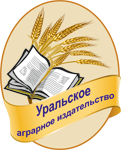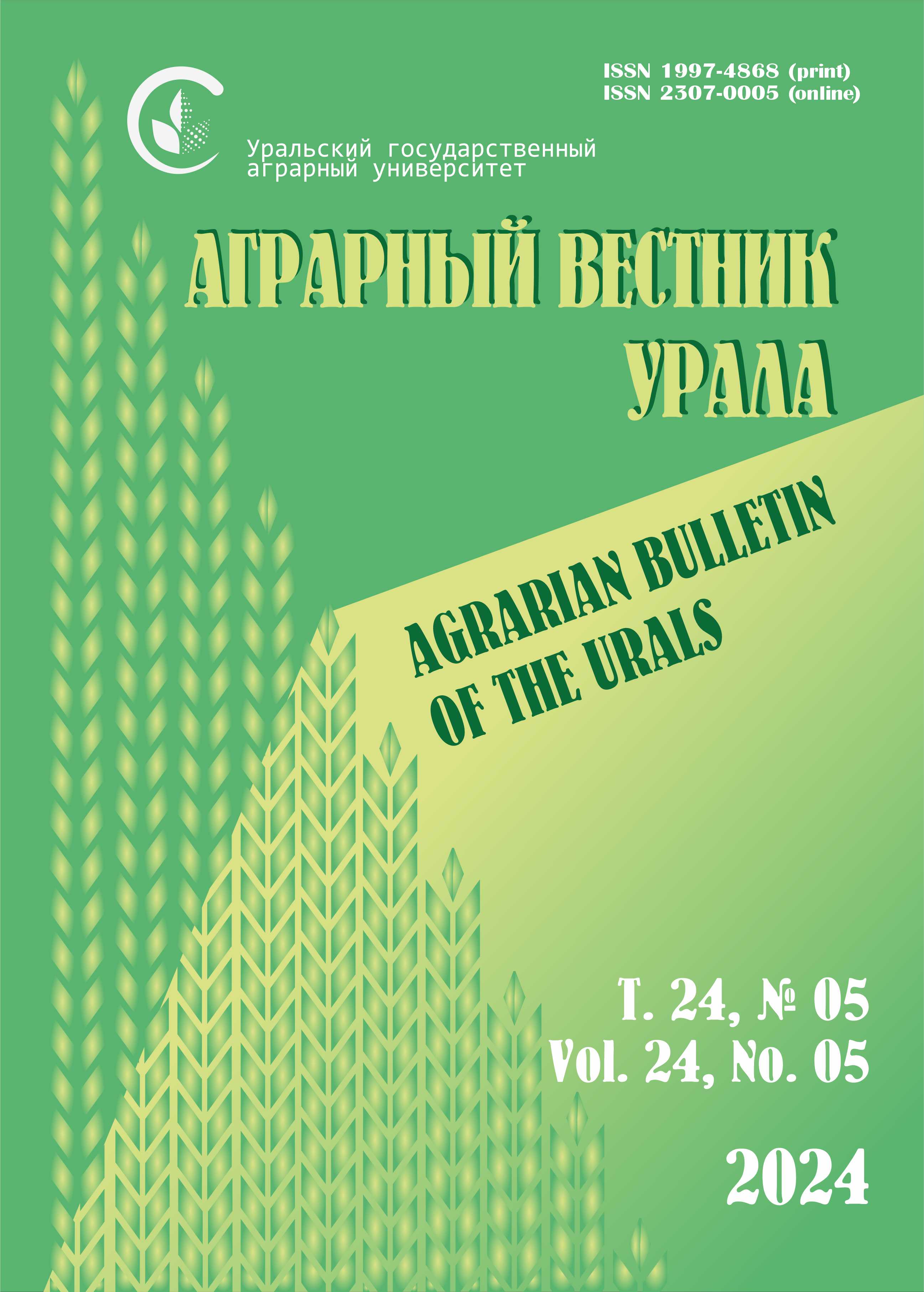Abstract. The problems of industrial production of pear fruits in the central part of Russia are primarily associated with the absence of an intensive type of rootstock with optimal economic and biological characteristics and high environmental plasticity. The purpose of the study is to assess the compatibility of graft–rootstock combinations of various pear cultivars of industrial importance with dwarf rootstocks based on common quince of VNIISPK breeding. The results of the studies will make it possible to lay intensive pear orchards in the conditions of Central Russia. Methods. The studies were carried out with 50 pear cultivars in 2008–2010 and 2018–2023. The experiment was laid in the scientific and production nursery on the basis of VNIISPK in 3-fold repetition by the method of grafting on two-year-old quince seedlings. There were 11 accounting plants in each repetition. The compatibility of graft-rootstock combinations was assessed visually during the growing season. Scientific novelty. In the Central region of Russia, the assessment of compatibility of dwarf seed stocks based on common quince of VNIISPK breeding with pear cultivars promising for industrial production is carried out for the first time. Results. Based on the obtained research data, the graft-rootstock combinations were divided into three compatibility groups: A – cultivars compatible with quince stock that showed high quality of accretion, intensive development of grafts and the best quality of pear seedlings in nursery conditions; B – satisfactorily compatible, which, being quite viable graft-rootstock combinations, showed isolated signs of negative affinity and were not effective enough for intensive production; C – incompatible pear cultivars. The main qualitative characteristics of pear seedlings are presented.
seed scion, common quince, pear cultivars, graft-rootstock combinations, compatibility
1. Kanametova A. V., Orshokdugova E. M. Vliyanie podvoya na prizhivaemost' privityh glazkov, silu rosta i vyhod standartnyh sazhencev grushi // Nauchnoe obespechenie ustoychivogo razvitiya agropromyshlennogo kompleksa v usloviyah aridizacii klimata: sbornik materialov III Mezhdunarodnoy nauchno-prakticheskoy konferencii. Nal'chik, 2023. S. 102–105. EDN: https://elibrary.ru/MSOZGQ
2. Friend A. P., Diack R. N., van Hooijdonk B. M., Knäbel M., Tustin D. S. and Palmer J. W. Scion architecture on dwarfing candidate pear rootstocks // Acta Horticulturae. 2020. Vol. 1281. Pp. 153–162. DOI:https://doi.org/10.17660/ActaHortic.2020.1281.22.
3. Sotnik A. I. Osobennosti kornevoy sistemy derev'ev grushi na raznyh podvoyah v Krymu // Magarach. Vinogradarstvo i vinodelie. 2021. T. 23, № 3 (117). S. 248–252. DOI:https://doi.org/10.35547/IM.2021.76.66.007. EDN: https://elibrary.ru/QYQHFE
4. Dolmatov E. A., Sidorov A. V., Baranov R. V. Zimostoykost' novyh form ayvy obyknovennoy v svyazi s ispol'zovaniem ee v kachestve semennogo podvoya grushi // Problemy agroekologii i adaptivnost' sortov v sovremennom sadovodstve Rossii: sbornik nauchnyh trudov. Orel, 2008. S. 60–64. EDN: https://elibrary.ru/YHAUSZ
5. Borisova O. N., Dolmatov E. A. Morozostoykost' kornevoy sistemy perspektivnyh klonovyh podvoev dlya grushi // Uspehi sovremennoy nauki. 2017. № 7. S. 11–13. EDN: https://elibrary.ru/ZCSPSV
6. Semin I. V. Evaluation of common quince of VNIISPK breeding as pear seedling rootstock for fruit production in Central Russia // E3S Web of Conferences. 2021. Article number 02017. DOI:https://doi.org/10.1051/e3sconf/202125402017. EDN: https://elibrary.ru/IOJIND
7. Semin I. V., Dolmatov E. A., Ozherel'eva Z. E. Perspektivy ispol'zovaniya podvoya intensivnogo tipa dlya vozdelyvaniya sadov grushi v usloviyah central'noy Rossii // Ovoschi Rossii. 2020. № 5. S. 75–80. DOI:https://doi.org/10.18619/2072-9146-2020-5-75-80. EDN: https://elibrary.ru/QMWUEE
8. Semin I. V. Priznaki nesovmestimosti komponentov privivki v privoyno-podvoynyh kombinaciyah grushi s ayvoy obyknovennoy // Ovoschi Rossii. 2023. № 5. S. 84–89. DOI:https://doi.org/10.18619/2072-9146-2023-5-84-89. EDN: https://elibrary.ru/LEWBJS
9. Semin I. V. Tehnologicheskie aspekty vyraschivaniya perspektivnyh semennyh podvoev dlya grushi na osnove ayvy obyknovennoy selekcii VNIISPK // Vestnik rossiyskoy sel'skohozyaystvennoy nauki. 2023. № 5. S. 52–56. DOI:https://doi.org/10.31857/2500-2082/2023/5/52-56. EDN: https://elibrary.ru/XFMNHS
10. Öztürk A. The Effects of Different Rootstocks on the Graft Success and Stion Development of Some Pear Cultivars // International Journal of Fruit Science. 2021. Vol. 21, No. 1. Pp. 932–944. DOI:https://doi.org/10.1080/15538362.2021.1948376. EDN: https://elibrary.ru/LGUNJQ
11. Kas'yanova G. V., Nikol'skaya, O. A., Solonkin A. V. Vliyanie podvoev dlya grushi na prizhivaemost' sortov mestnoy selekcii // Nauchno-agronomicheskiy zhurnal. 2023. № 2 (121). S. 17–21. DOI:https://doi.org/10.34736/FNC.2023.121.2.003.17-21. EDN: https://elibrary.ru/QVGZWI
12. Mac an Saoir, S., Johnston S., Kearns J. Pear systems trial, Conference on Quince Adams and Quince EMC rootstocks in N. Ireland // Acta Horticulturae. 2022. Vol. 1346. Pp. 347–352. DOI:https://doi.org/10.17660/ActaHortic.2022.1346.43. EDN: https://elibrary.ru/KATJDJ
13. Korovin V. A. Prichiny nesovmestimosti pri privivkah plodovyh rasteniy. Sovmestimost' privoya i podvoya yabloni. 1979. Moskva: Kolos. 127 s.
14. Sedov E. N. Programma i metodika sortoizucheniya plodovyh, yagodnyh i orehoplodnyh kul'tur. Orel: VNIISPK. 1999. 608 s.
15. Borisova O. N. Hozyaystvenno-biologicheskie osobennosti novyh form ayvy obyknovennoy selekcii FGBNU VNIISPK v kachestve podvoev dlya grushi: avtoreferat dis. ... kand. s.-h. nauk. Orel, 2019. 22 s. EDN: https://elibrary.ru/HPWDFZ









